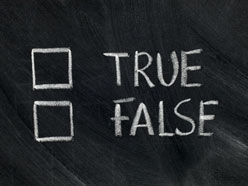
Detecting lies and misleading statements isn’t easy; just ask the participants of a recent Journal of Behavioural Finance study, which tested the ability of 154 randomly selected, U.S.-based financial professionals.
The study was conducted by three City University of New York professors and Jason Voss, a content director at CFA Institute. They asked the participants, who were affiliated with the CFA Institute, to watch videos as well as listen to quarterly conference calls from public companies, and the goal was to assess how well they could identify liars and pinpoint misleading statements, reports The Wall Street Journal. In particular, the calls they listened to were ones that “included statements that the SEC had identified as misleading or false,” says WSJ.
The average accuracy rate of the participants was 49.4% when it came to successfully identifying truth versus lies, says WSJ. According to the Journal of Behavioural Finance, their “lie detection accuracy was poor; participants performed no better than would be expected by chance. Accuracy in identifying lies about financial fraud was especially poor.”
Why did the finance professionals fail the test?
One reason they performed poorly, says WSJ, was due to truth bias (as Psychology Today explains, this bias is based on “a normal reaction because, in general, people tend to believe others,” and it’s hard not to believe what you hear, see and read). WSJ adds the participants “also did worse when they were highly confident of their performance.”
But, more importantly, what does the results of the study mean for the financial industry? Choosing sound investments and identifying red flags goes a long way toward helping and protecting clients, so make sure you’re aware of the biases that can affect your judgement.
Read the full WSJ article for more.
Also, check out these articles:
Save clients from emotional mistakes